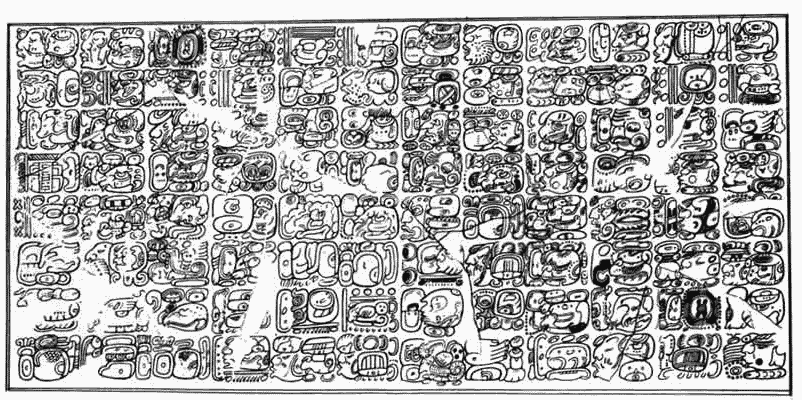
THE TABLET OF THE 96 HIEROGLYPHS
Drawing of an inscription from the Palace of Palenque, Chiapas, Mexico, Late Classic period Maya, 764 A.D. A rare instance of a wall of visual/verbal inscriptions without accompanying human or animal figures..
Even before they were decoded & translated into equivalent words, inscriptions like this were enough to touch off charged responses in the poets who viewed them. Charles Olson, e.g., in Mayan Letters (1951), both retinally excited and already aware of the interplay of image and sound therein: "…there is no reason not to come in quite fresh from the other end, and see the whole business of glyphs as, 1st, language, and afterward, uses of same // and it is the fact that the glyphs were the alphabet of the books that puts the whole thing back to the spoken language. Or so it seems to me, this morning."
The thrust, as elsewhere, is toward a redefinition of poetry — how written & how spoken, seen & heard.
ethnopoetics visuals
ethnopoetics main
ubuweb